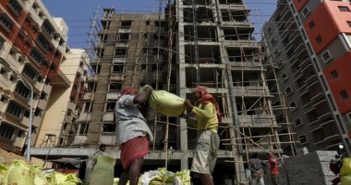
Which are top cities for real estate investments?
Track2Realty picks up Investment Magnet Cities of India through a comprehensive pan-India survey. The idea is to identify the top real estate destinations for the home buyers in the country.

Track2Realty picks up Investment Magnet Cities of India through a comprehensive pan-India survey. The idea is to identify the top real estate destinations for the home buyers in the country.

The three southern cities collectively saw residential sales of 61,400 units between January and September 2019 as against 64,420 units sold in the first three quarters of 2018. MMR and Pune, on the contrary, saw the sale of nearly 93,930 units in 2019 against 70,740 units in the corresponding period in 2018. Altogether, the top 7 cities recorded sales of 2,02,200 units in 2019 till September, of which western cities comprised 46% overall share while southern region consisted of 30% share.

The festive season has traditionally been an active period for real estate sales as many buyers consider Navratri and Diwali an auspicious time to buy property. Like in previous years, developers this year have sweetened property deals – some up-front discounts, or more commonly 0% GST (which is in any case not charged on ready-to-move properties), waived stamp duty and registration charges, free reserved car parking, modular kitchens, etc.

There has been a slump in the market. Huge unsold inventory has forced firms to not increase their rates. As a result, prices have remained range bound. With fewer launches, market is ready for homebuyers willing to take the buying decision. The unsold inventory during first nine months (July-September) of 2019 was 444,673 units, registering a small drop as compared to the corresponding period in 2018. While there has been a revival of sorts in sales since 2018, developers are still not out of the woods.

The success of the Embassy Parks REIT has given global investors strong reason to increase their stake in multiple commercial assets across the country so that these could be listed under REITs in the future. Some of these global institutional investors who are eyeing the country’s real estate market via REITs include Japan’s NikkoAm StraitsTrading Asia, US’ North Carolina Fund, Taiwan’s Eastspring Investments, Malaysia’s Hwang Asia Pacific REITs and Infrastructure Fund, and Canada-based Sentry Global.

Among the major factors contributing to the escalating ‘claustrophobia effect’ of shrinking apartment sizes, demand for affordable homes in metros tops the list. Also, buyers are increasingly looking to avail the government’s credit subsidy benefits for affordable housing. These require a home to be priced

There is no simple yardstick to calculate the exact number of units and the actual funds that are needed to complete them. Each delayed project is different in size, stage of completion, city and micro-location, etc. Also, various methodologies are used to reach an approximate number. After considering the government’s caveats – non-inclusion of projects under NCLT, and inclusion of mid and affordable units only, ANAROCK has shortlisted units launched in 2013 or before.

Additionally, the fact that the corpus will be completely professionally-driven including real estate experts, banking or housing finance specialists, it is likely to move more smoothly and in the right direction with little scope for misadventure. These specialists will need to identify such projects that are affordable and middle-income projects and are in need of last-mile funding for completion. The government’s move to relax commercial borrowing for affordable housing is another welcome step.

Traditionally, the festive quarter fares better than the previous quarters of the year when it comes to housing sales – the combination of religious sentiment and festive deals and freebies is a potent mix during this part of the year. For instance, Q4 2015 saw 70,000 homes sold in the seven major cities. However, as tempting as it was for developers to believe that this was an unshakeable performance standard, it was certainly shaken just a year later. After demonetization (DeMo) was announced in this critical quarter in 2016, housing sales halved to 32,100 units.

Indian real estate is still a viable and fairly safe long-term investment option. Investors with a short-term view on ‘instant returns’ need to look elsewhere, but most other asset classes are quite volatile in nature and will continue to remain so. Indian residential real estate is a long-time favourite of resident Indians and NRIs, and recent trends suggest a positive outlook for this asset class going forward. Property prices have bottomed out and cannot possibly reduce further, especially since construction costs are gradually heading north.
